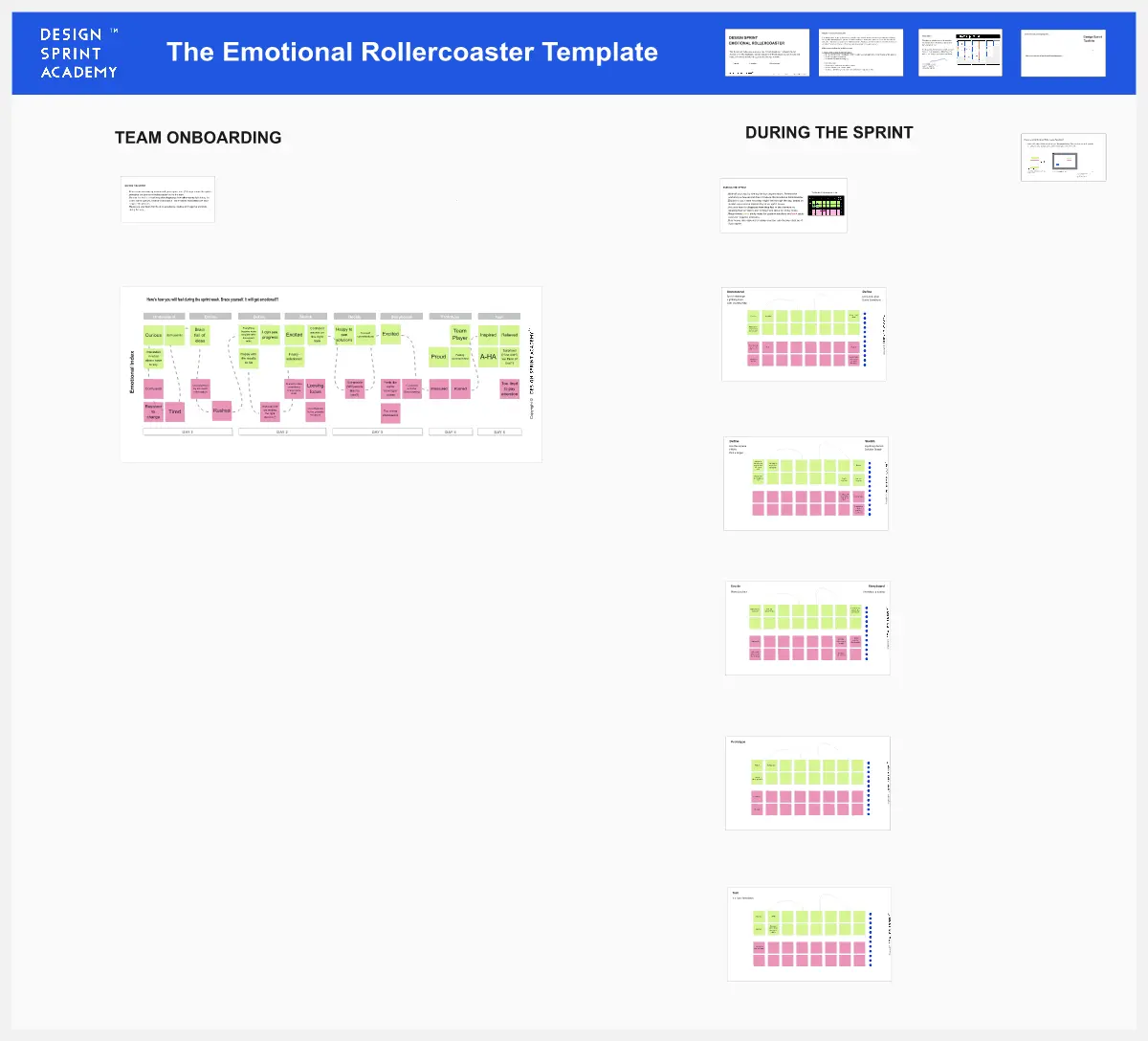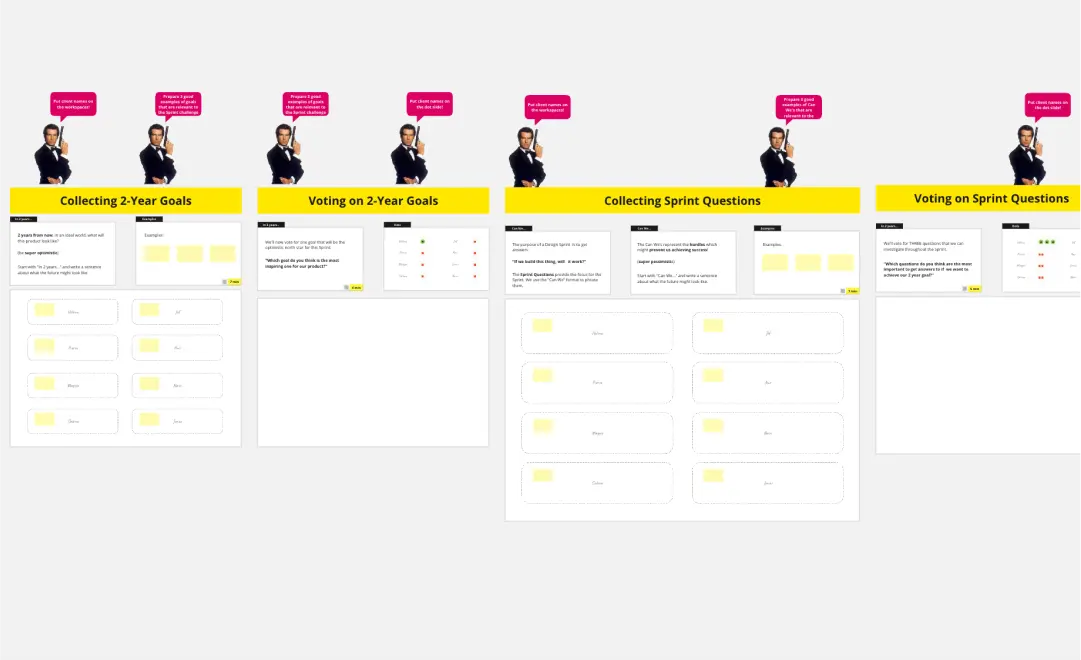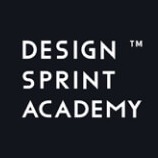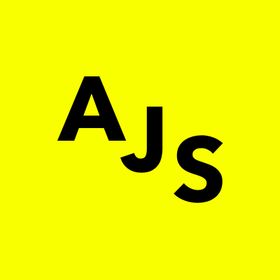The Hero Framework
Welcome to the Hero Framework Miro Template!
First - watch this video to learn about the Hero Framework: http://contrastux.com/heroframework.
This template is designed to help you and your team navigate through the process of identifying and overcoming any product challenges, new features and even fresh new products.
The Hero Framework encourages a structured yet creative approach to problem-solving and strategic planning by emphasizing the journey from problem identification to resolution. It follows the Google Design Sprint methodology (which I've been trained on in 2015 in the first-ever training for non-googlers on the method), and mixed with storytelling (a passion of mine) and other practical applications I learned along the years.
How to Work with This Template
Define the Mission: Begin by defining your mission. This includes outlining your sprint mission, business objectives, and customer objectives. Use this section to set the stage for your hero's journey.
Welcome Section: Introduce the team to the Hero Framework and its purpose. This section provides a brief overview and sets the tone for the collaborative session. Make sure everyone understands the framework and the steps involved.
Hero Definition: Define your "hero" in this section. This could be your team, a product, or a customer. Outline the hero's characteristics, strengths, and the current situation. This helps in creating a clear picture of who the hero is.
Identify the Challenge: Move on to identifying the primary challenges or problems the hero faces. Use the Challenge Identification section to brainstorm and list these challenges. Encourage broad thinking to cover all potential issues.
Journey Mapping: In this section, map out the hero's journey. Outline the steps the hero will take to overcome the challenges. Use visual aids like sticky notes and connectors to create a flowchart of the journey, highlighting key milestones and potential roadblocks.
Obstacles and Allies: Identify potential obstacles and allies in the journey. Obstacles are hindrances that might impede progress, while allies are resources, tools, or people that can assist. Use this section to categorize and elaborate on these elements.
Action Planning: Detail the specific actions the hero must take to overcome each obstacle and leverage each ally. This section breaks down the journey into actionable steps and assigns responsibilities. It's essential for translating the journey map into a concrete plan.
Success Mapping: Define how you will measure the success of the hero's journey. Set clear, achievable metrics that align with your overall goals. This section ensures that you have a way to track progress and evaluate the outcome.
Visualize Your Journey: Use the provided visual tools to create an engaging and comprehensive representation of your journey. This includes using images, diagrams, and other visual aids to make the framework more understandable and appealing.
Tips for Effective Use
Engage Your Team: Ensure that all team members are actively participating and contributing ideas. The more diverse the input, the richer the framework.
Be Visual: Utilize Miro’s visual tools such as sticky notes, images, and connectors to create an engaging and easy-to-understand map.
Iterate and Refine: Don’t be afraid to revisit and revise sections as you gain more insights. The hero's journey is iterative and may need adjustments along the way.
Keep It Dynamic: Encourage ongoing updates and refinements. The template should evolve as the team progresses and new challenges or allies are identified.
By the end of this process, you should have a comprehensive, visually engaging plan that outlines your journey from identifying a challenge to achieving your goals, just like a hero in a story. This framework not only helps in problem-solving but also fosters team alignment and engagement.
Categories
Similar templates




